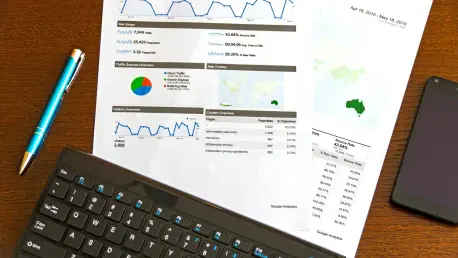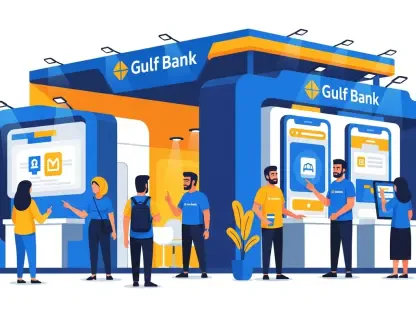A Financial Revolution for Small Businesses
In today’s dynamic economic landscape, small and medium-sized businesses (SMBs), particularly in niche sectors like beauty, wellness, and fitness, grapple with persistent funding challenges that stifle growth and hinder their ability to thrive. A staggering number of these businesses operate on razor-thin margins, often unable to invest in critical tools like point-of-sale (POS) hardware due to inaccessible traditional financing. This market analysis delves into how Pay with Liberis, a pioneering Buy Now, Pay Later (BNPL) solution by global embedded finance leader Liberis, in partnership with Vagaro, a top business management platform, is reshaping the financial terrain for SMBs. By examining current trends, data-driven insights, and future projections, this analysis uncovers the transformative potential of embedded finance and its role in empowering small businesses to thrive amidst economic constraints.
Decoding Market Trends: The Rise of Embedded Financing
Shifting Dynamics in SMB Funding
The financial ecosystem for SMBs has undergone a notable transformation in recent years, driven by the limitations of conventional loan structures that often exclude smaller players in specialized industries. Data indicates that a significant percentage of beauty and wellness businesses struggle with cash flow, unable to secure capital for essential investments without facing stringent credit checks or high interest rates. Embedded finance, which integrates funding solutions directly into platforms businesses already use, has emerged as a game-changer, offering flexibility and accessibility previously out of reach. The partnership between Liberis and Vagaro exemplifies this shift, with Pay with Liberis providing a tailored BNPL product branded as Capital for Hardware within Vagaro’s ecosystem, addressing specific pain points for merchants in the U.S. market.
Tailored Solutions Driving Adoption
Focusing on niche needs, Pay with Liberis allows SMBs to finance purchases ranging from $500 to $10,000, with an initial cap of $3,000 during its rollout phase, directly at checkout. This product stands out by tying repayments to a fixed percentage of future revenue, easing the burden of fixed monthly payments and aligning with the fluctuating income patterns of small businesses. Market observations reveal that such customized financial tools are gaining traction, as they mitigate the risk of cash flow disruptions while enabling investments in growth-oriented assets like hardware. The seamless integration into Vagaro’s platform further boosts adoption, eliminating the need for external lenders and reducing administrative friction for users.
Regional Nuances and Market Penetration
Analyzing regional dynamics, the U.S. market presents unique challenges for SMBs in beauty and wellness, where economic pressures often exacerbate funding gaps. Pay with Liberis addresses these issues by offering a solution that prioritizes merchant-friendly terms, such as automatic payment deductions from daily revenue and penalty-free early repayment options. Current market data suggests that such targeted financial products are resonating with small businesses, particularly in sectors with high operational costs but limited access to capital. As Liberis plans to expand this offering to additional markets by 2027, the potential for localized adaptations could further enhance its relevance across diverse economic landscapes, solidifying embedded finance as a cornerstone of SMB support.
Future Projections: The Expanding Horizon of Embedded Finance
Technological Innovations Shaping the Sector
Looking ahead, the trajectory of embedded finance points toward deeper integration with everyday business tools, fueled by technological advancements like AI-driven repayment models that personalize financing terms based on real-time revenue data. Projections suggest that by the end of this decade, most business management platforms will incorporate financial solutions as standard features, streamlining access to capital for SMBs globally. The collaboration between Liberis and Vagaro sets a precedent for this trend, demonstrating how embedded products can drive operational efficiency by embedding funding directly into checkout processes, thus reducing decision-making delays for merchants.
Economic and Regulatory Influences
Economic forecasts indicate that ongoing uncertainties, such as inflation or fluctuating consumer spending, may push more SMBs toward flexible funding options like BNPL over traditional loans. However, regulatory scrutiny surrounding BNPL products could introduce challenges, as policymakers examine the risks of over-leveraging among small businesses. Market analysts anticipate that balanced regulations, coupled with transparent repayment structures like those offered by Pay with Liberis, will be critical to sustaining growth in this sector. The ability to track repayments via user dashboards and access downloadable statements further positions such products to meet evolving compliance demands while maintaining merchant trust.
Scaling Impact Across Industries
Beyond current applications, the potential for embedded finance to scale across other niche industries remains a key area of growth. Projections highlight that as platforms like Vagaro expand their user base, complementary financial offerings, such as Vagaro Capital alongside Pay with Liberis, could create a robust ecosystem of funding options for SMBs. This multi-product approach is expected to deepen market penetration, particularly in underserved sectors where access to tailored capital can unlock significant growth opportunities. The strategic focus on customization and integration will likely serve as a blueprint for other fintech providers aiming to capture similar markets in the coming years.
Reflecting on the Market Shift: Strategic Insights for SMBs
Looking back, the introduction of Pay with Liberis through its partnership with Vagaro marked a pivotal moment in addressing the entrenched funding barriers faced by SMBs in the beauty, wellness, and fitness sectors. The analysis revealed how embedded finance tackled immediate financial needs with innovative, user-centric solutions that prioritized flexibility and accessibility. For business owners, the strategic takeaway was clear: evaluate operational needs, particularly in hardware or marketing, and leverage tools like Pay with Liberis for investments within the accessible range of $500 to $3,000, with potential for higher limits as the product scaled. Best practices included utilizing transparent tracking features to manage repayments effectively and exploring complementary financial products within platforms like Vagaro to diversify funding sources. As the market continued to evolve, staying attuned to emerging embedded finance solutions became essential for SMBs aiming to maintain a competitive edge in an increasingly digital economy.









